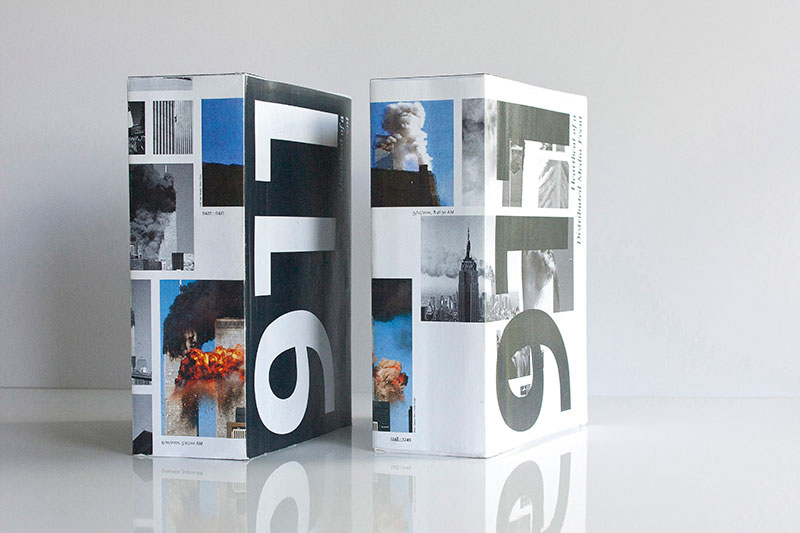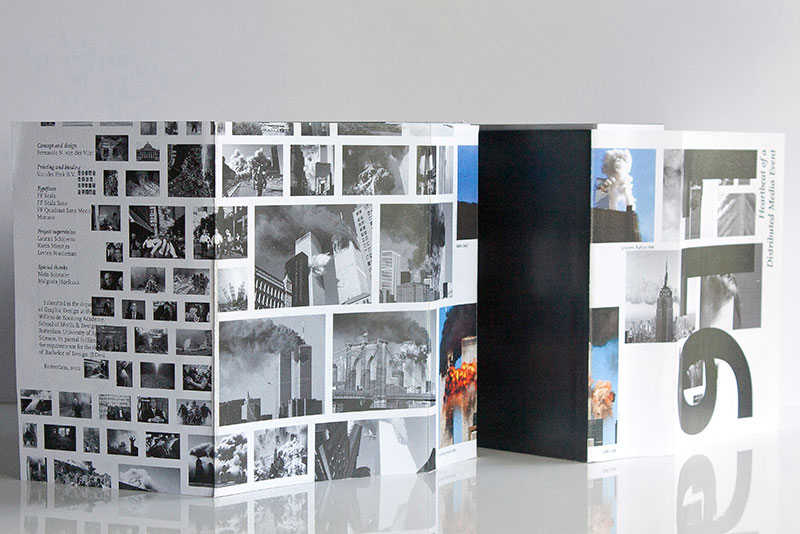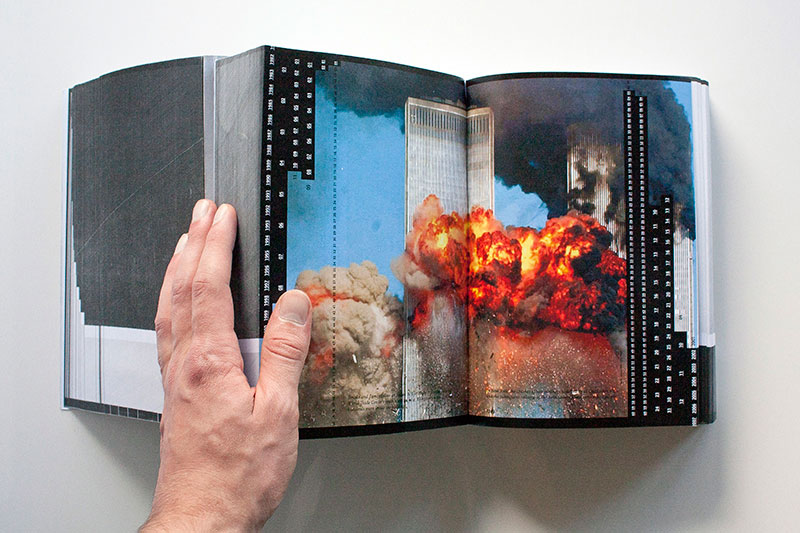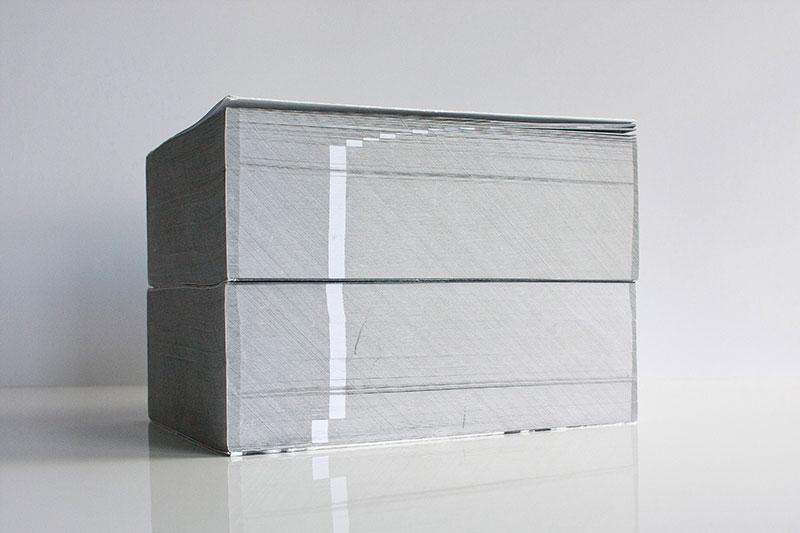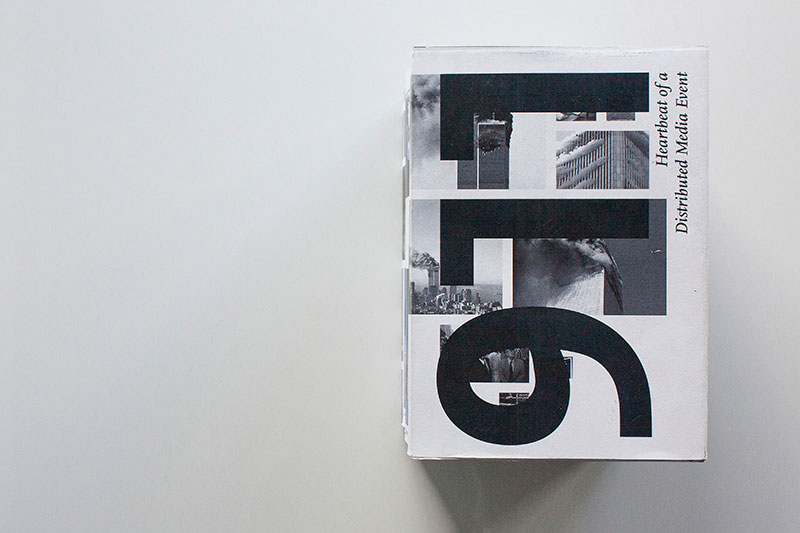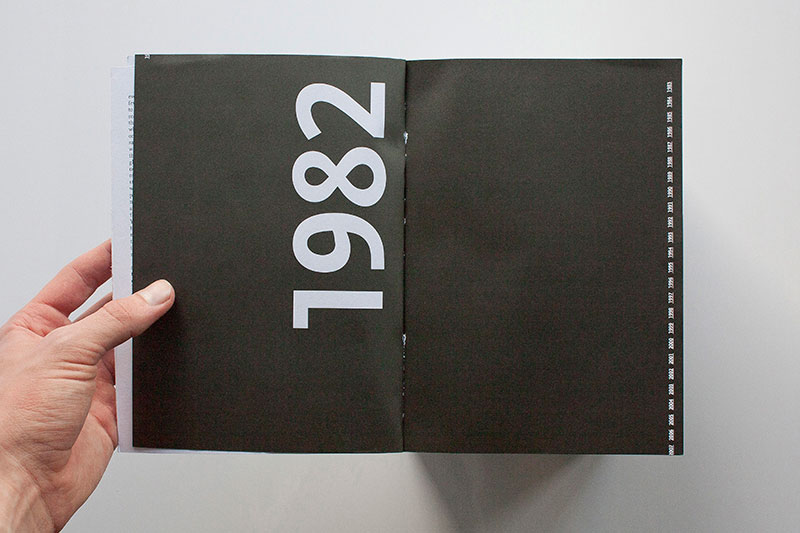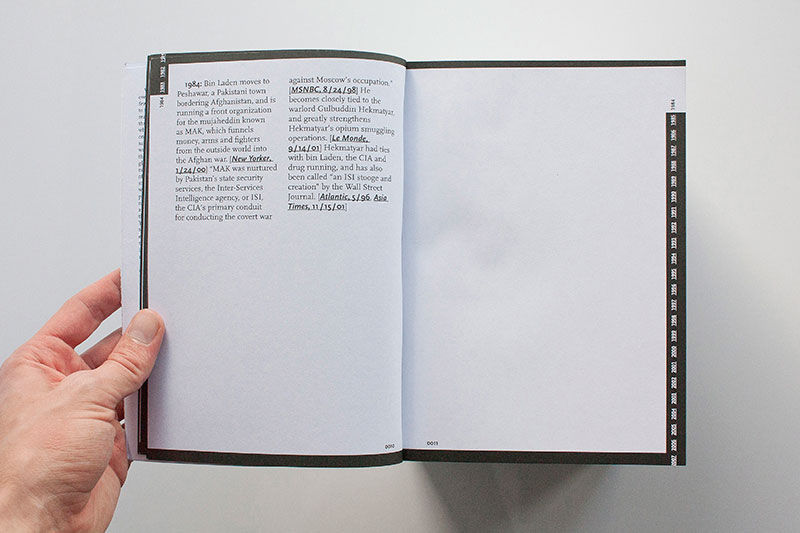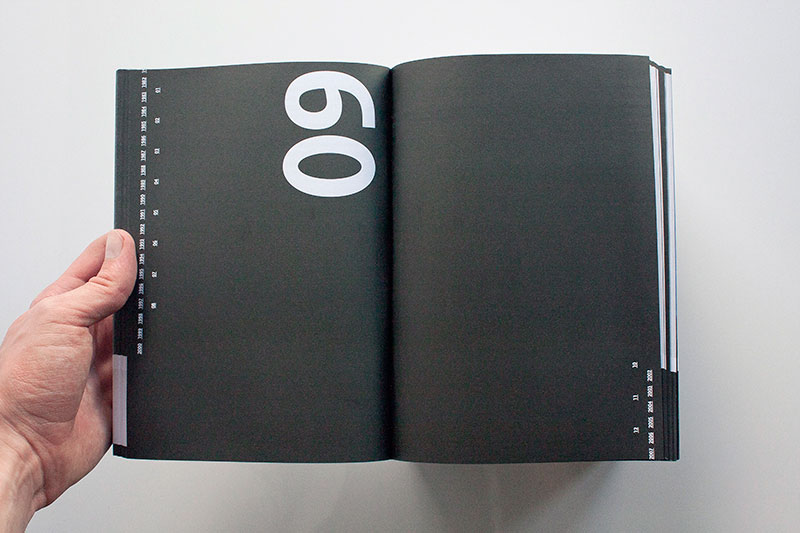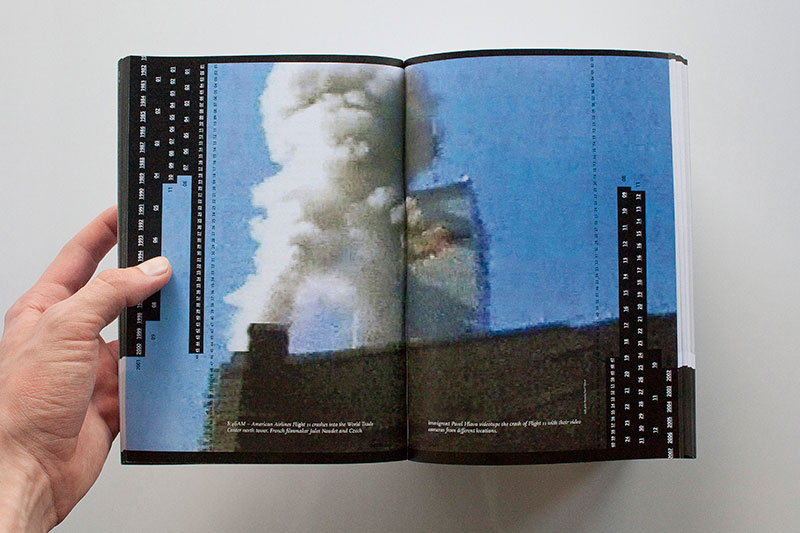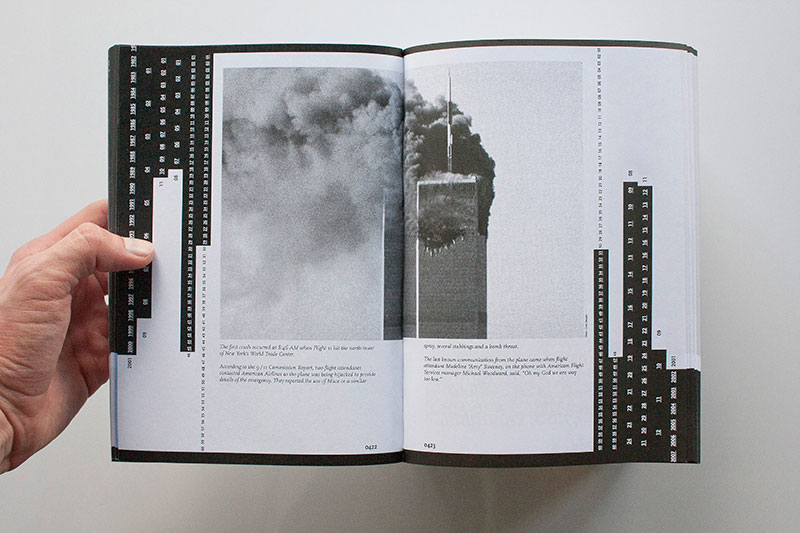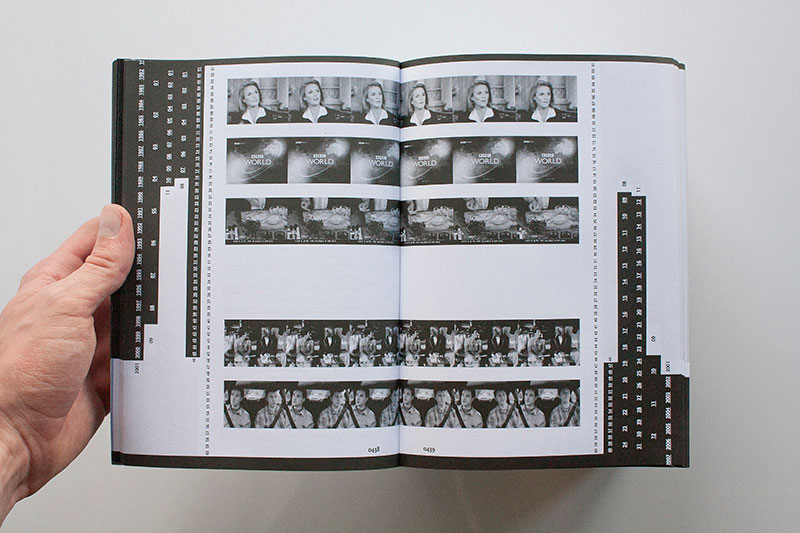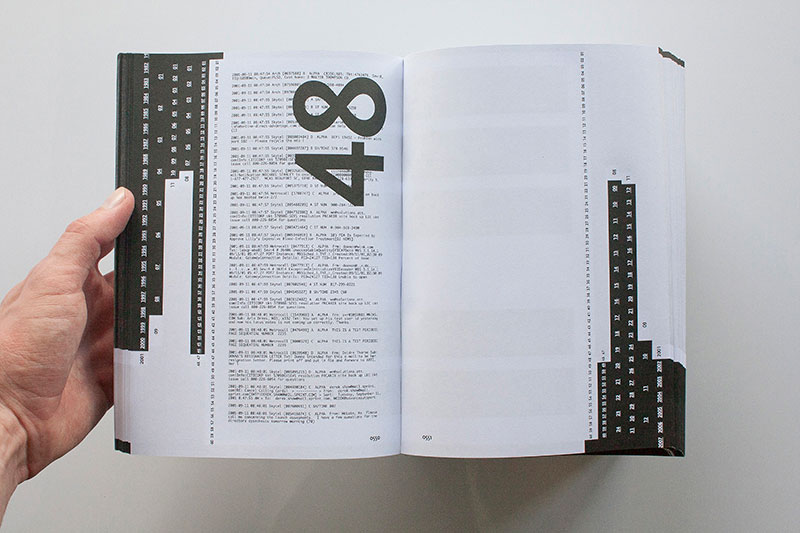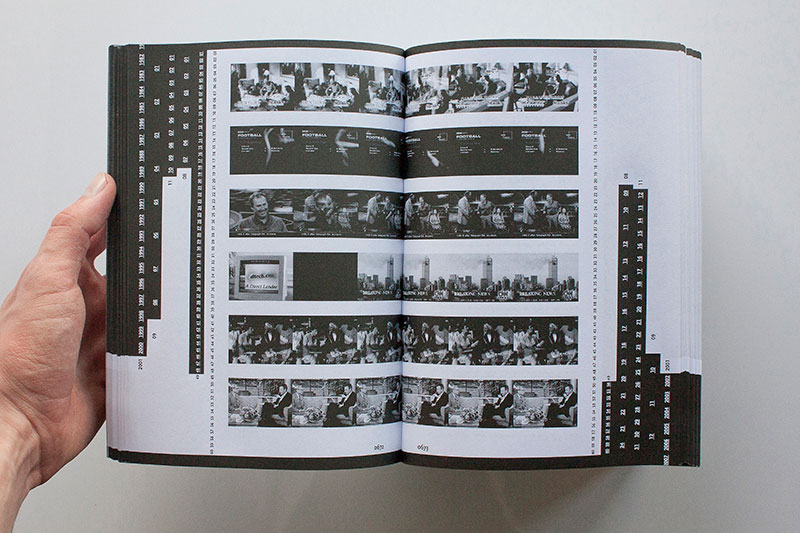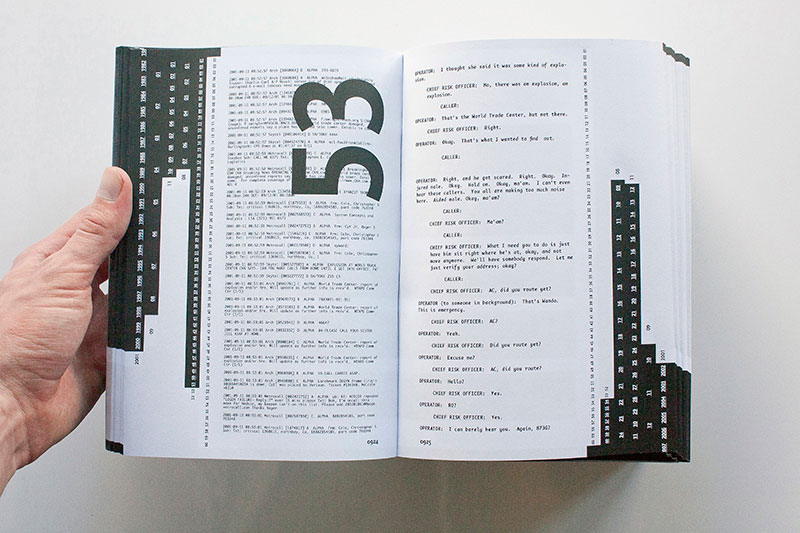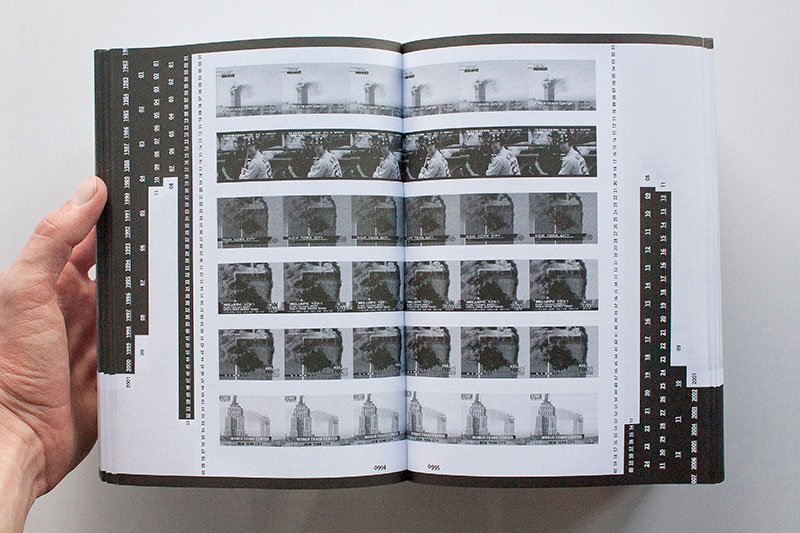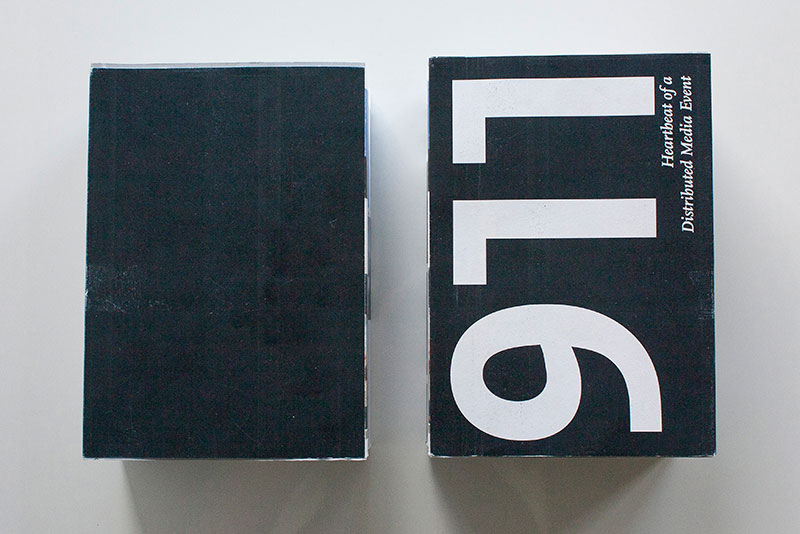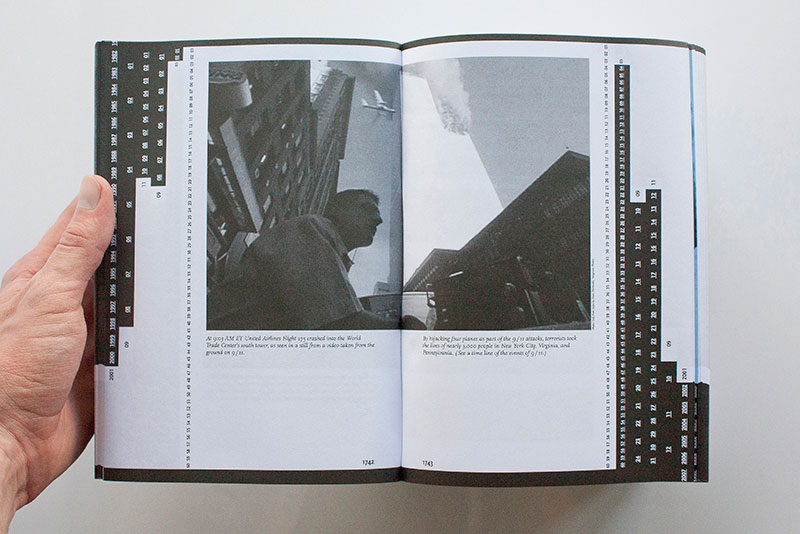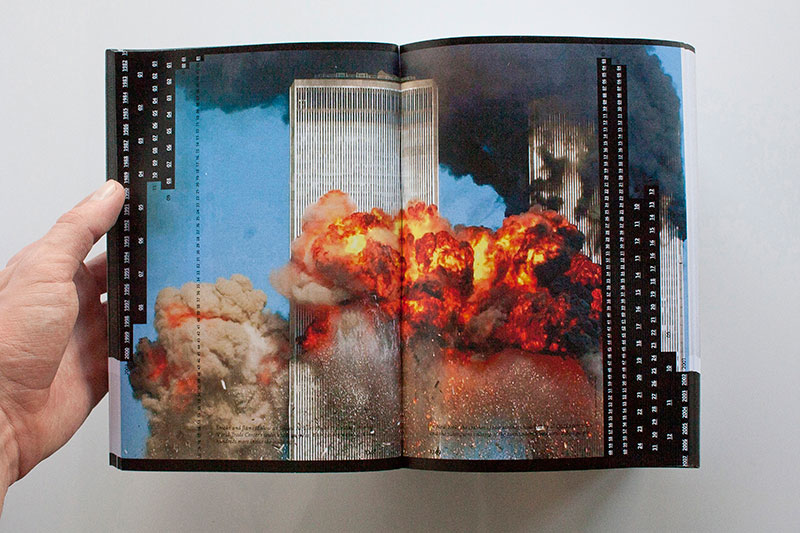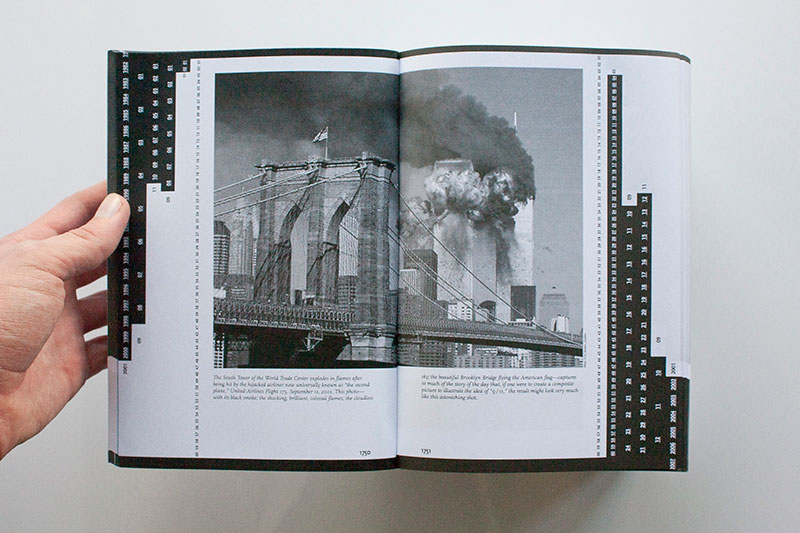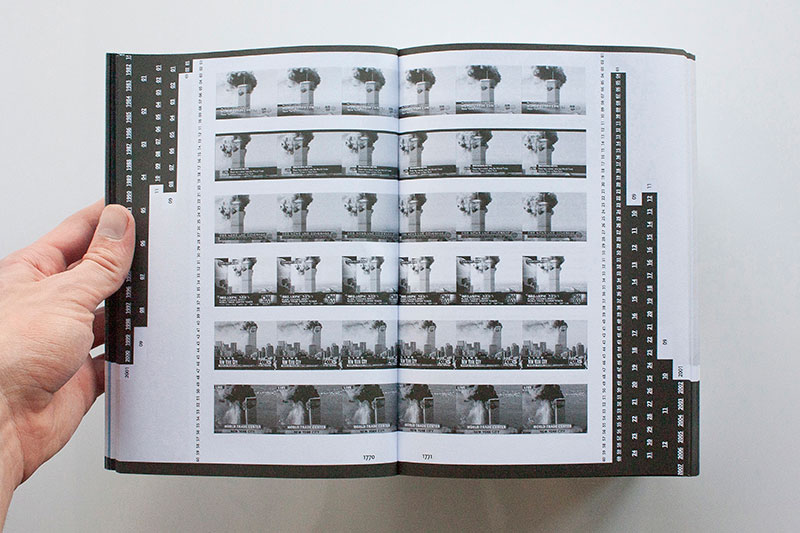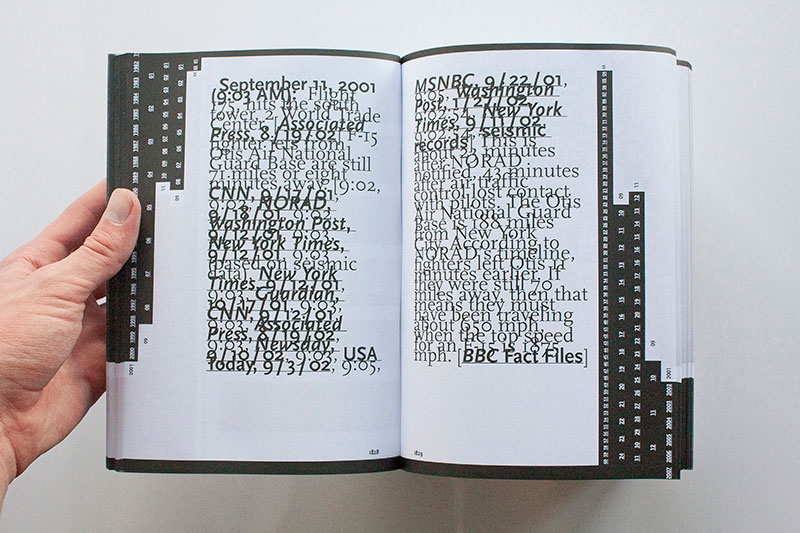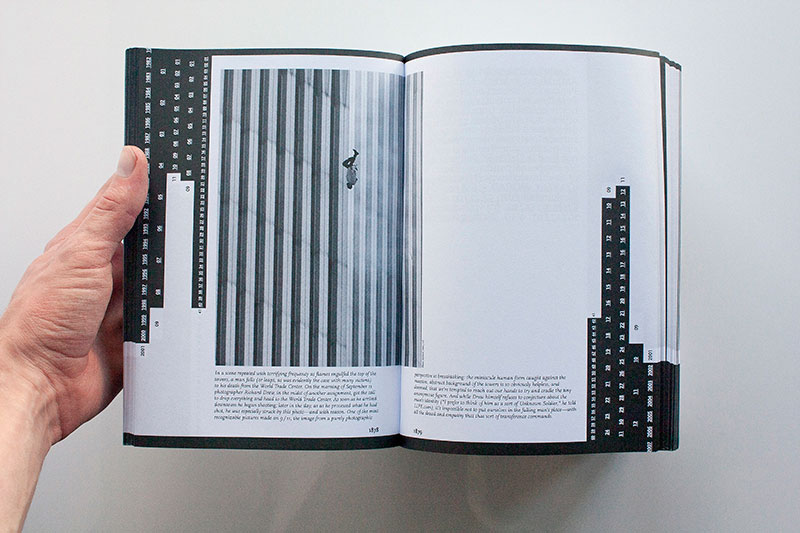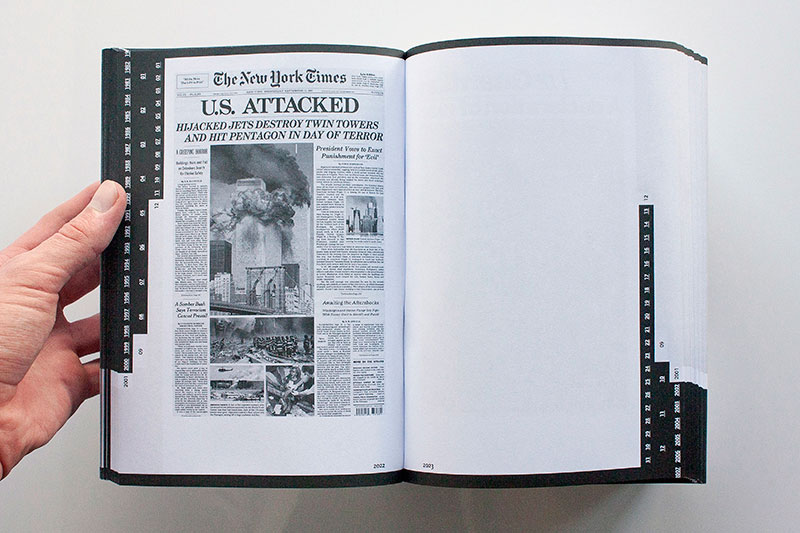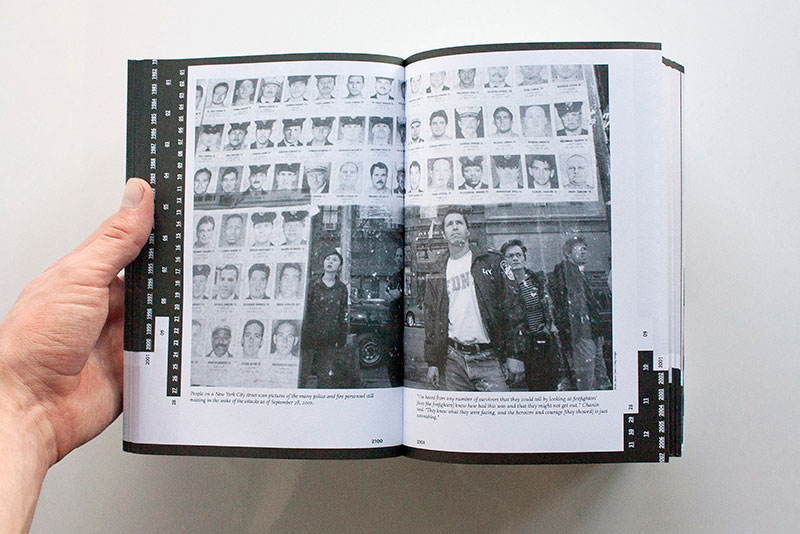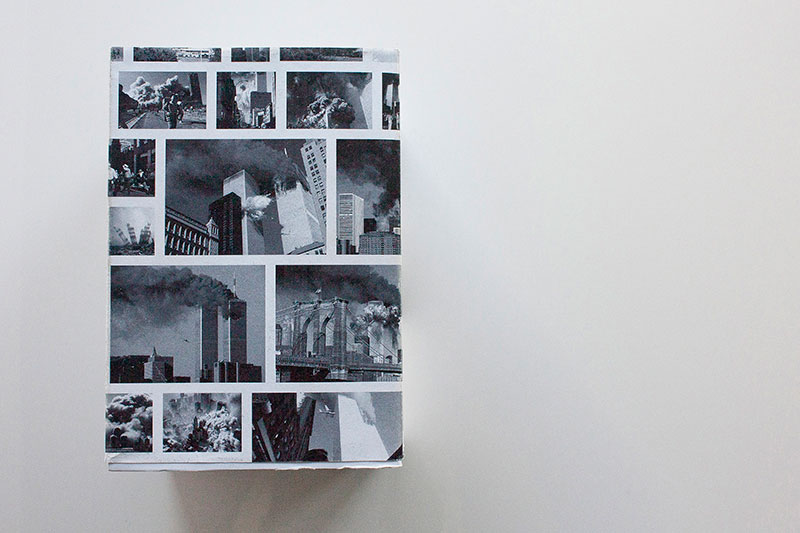🎓 📙Paperbacks
│ 📜📜🎖🎖
Distributed Images
911:
Heartbeat of a Distributed Media Event
By:
✍️F. N. van der Vlist
│
On:
🕓2012, June 11
│
In:
🏢Willem de Kooning Academy (Rotterdam University of Applied Sciences)
📂Designing for Distributed Media Events The two monumental volumes present a rigorous analysis of one particular image – the crash of American Airlines Flight 175 into the south tower of the WTC on September 11, 2001 – that lends its iconic power to an emergent network of related media objects. The events on September 11 have been captured and preserved by many, and in a wide variety of different media formats. Using varied primary documentary materials (e.g., archived newspapers, news articles, photographs, television channel streams, recorded phone conversations, stored text messages, pager data from the FDNY) and a systematic design approach, 911: Heartbeat of a Distributed Media Event – where the title refers both to the date of event and the emergency service response number – unfolds the trajectory of this media event across nearly 2,500 pages. It is printed entirely in black with the exception of two full page images. The project provides a novel perspective on the emergent media ecology of a photographic icon of an event seared into collective memory. By tracing the associations of the iconic image under consideration, and by reconstructing its chronological trajectory, it becomes instantly clear how time is mediated and effectively synchronised worldwide at the time of the events. Across the board, television channels interrupted their routine programming flows one after another in order to televise the breaking news. The crash of American Airlines Flight 11 caught people entirely by surprise, but was captured on camera, although in relatively poor quality, by two French-born American filmmakers – brothers Jules and Gédéon Naudet – who were there incidentally to shoot a documentary film about a firefighter. In contrast, the second plane crash of American Airlines Flight 175 occurred once all television camera’s were set up, pointing at the burning tower while live broadcasting the breaking news event across their networks. Consequently, the second crash is observed and documented from a large number of places, by many people, and with different kinds of registration devices, resulting in high-quality photographs, voice recordings, moving images, and many other primary documentary materials. Everyone could see the collapse of the Twin Towers of the World Trade Center, and they could see it live. It is under these conditions that the iconic photographic image of the burning tower could be staged, produced, widely circulated, and collectively remembered.
